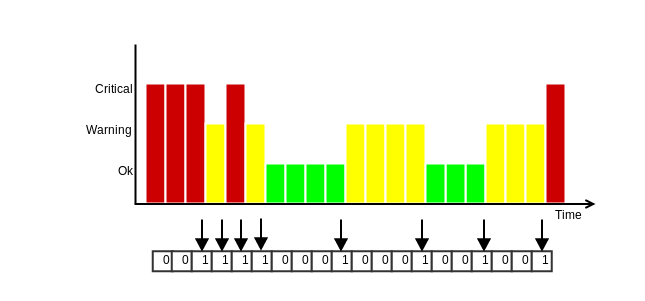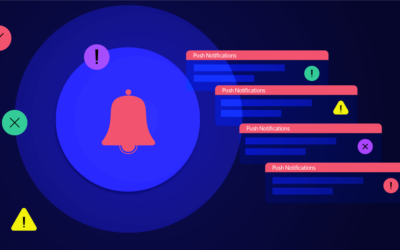Flapping detection is a feature many monitoring suites offer. It is mainly used to detect unfortunately chosen thresholds, but can also help in detecting network issues or similar. In most cases two thresholds are used, high and low. If the flapping value, which is the percentage of state changes over a set time, gets higher than the high threshold, it is considered flapping. It will then stay flapping until the value drops below the low threshold.
Naturally Icinga 2 had such a feature, just that it implemented a different approach and didn’t work. For 2.8.0 we decided it was time to finally fix flapping, so I went to investigate. As I said the flapping was working differently from Icinga 1, Shinken, etc. Instead of two thresholds there was just one, instead of one flapping value there were two and they change based on the time since the last check. Broken down it looks like this:
positive; //value for state changes
negate; //value for stable changes
FLAPPING_INTERVAL; //Compile time constant to smoothen the values
OnCheckResult() {
if (positive + negative > FLAPPING_INTERVAL) {
pct = (positive + negative - FLAPPING_INTERVAL) / FLAPPING_INTERVAL;
positive -= pct * positive;
negative -= pct * negative;
}
weight = now - timeOfLastCheck;
if (stateChange)
positive += weight;
else
negative += weight;
}
IsFlapping() {
return 100 * positive / (negative + positive);
}
The idea was to have the two flapping values (positive & negative) increase one or the other with every checkresult. Positive for state changes and negative for results which were not state changes, by the time since the last check result. The first problem which arises here, while in most cases the check interval is relatively stable, after a prolonged Icinga outage one of the values could be extremely inflated. Another problem is the degradation of the result, in my tests it took 17 consecutive stable results for a flapping value to calm down.
After some tweaking here and there, I decided it would be wisest to go with the old and proven style Icinga 1 was using. Save the last 20 checkresults, count the state changes and divide them by 20. I took inspiration in the way Shinken handles flapping and added weight to the sate changes, with the most recent one having a value of 1.2 and the 20th (oldest) one of 0.8. The issue of possibly wasting memory on saving the state changes could be resolved by using one integer as a bit array. This way we are actually using slightly less memory now \o/
The above example would then have a value of 39.1%, flapping in the case of default thresholds. More details on the usage and calculation of flapping in Icinga 2 can be found in the documentation once version 2.8.0 is released.





